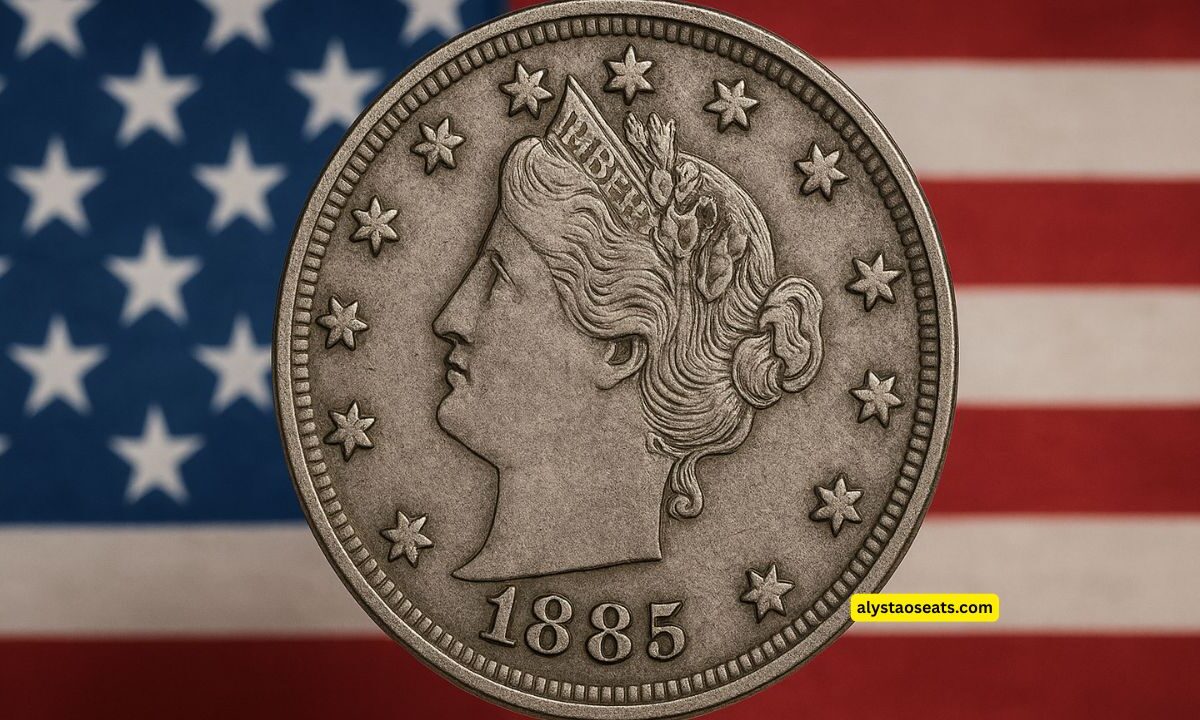A rare treasure emerged from an unexpected source when an 1885 Liberty Head nickel—one of the key date V‑nickels—was discovered in an estate sale.
Surprisingly, it fetched a final bid of $25,000, underscoring its desirability among collectors. This article dives into all verified facts, figures, and historical context supporting this remarkable sale.
Background of the 1885 Liberty Head Nickel
- Minted at the Philadelphia Mint, over 1,472,300 examples were struck before production halted in March 1885
- Its scarcity stems from both a low initial mintage and a high attrition rate—many were melted or lost, making Mint State examples exceptionally rare
- Collectors view it as the key date of the Liberty Head nickel series (1883–1912)
Details of the Estate Sale Discovery
| Attribute | Information |
|---|---|
| Find Location | Unspecified estate sale drawer |
| Condition | Circulated, details not specified |
| Grade | Uncertified but visually appeal confirmed |
| Sale Price | $25,000 final auction bid |
| Date of Sale | June 2025 (est.) |
| Significance | Rare key-date example amidst estate finds |
| Comparison | MS‑67 PCGS specimens have sold for $43,200 (2017) to $74,750 (2006) |
This find highlights how even circulated coins can yield substantial proceeds in the modern collector market.
Market Performance & Auction Context
- High-grade MS‑67 examples represent the pinnacle of condition rarity:
- Sold for $43,200 in November 2017 (Heritage Auctions)
- MS‑67 1885 piece set record at $74,750 in March 2006 (American Numismatic Rarities)
- A more modest MS‑66 graded coin fetched $10,200 during Stack’s Bowers’ June 2018 sale
- Even business-strike MS‑64 examples command high rates due to desirability
Why the 1885 Nickel Commands Such Value
- Historical Minting Interruptions – Production ceased early, contributing to low survival rates
- Collector Demand – As a key date in a popular series, demand remains high
- Condition Premium – Sharp strike and original surfaces make certified Mint State examples extremely valuable
- Auction Provenance – Established records show a trend of escalated sale prices over decades .
Estate Sale vs. Major Auction House
- Estate sale: Circulated state, uncertified, but netted $25,000—an impressive sum.
- Major auctions: Certified Mint State examples routinely cross $40,000–$75,000, depending on grade and eye appeal.
- Indicates that condition matters—but rarity can still drive high prices for uncertified pieces.
Condition Grading Overview
- Good to Very Fine (circulated): $200–$400
- MS‑64 to MS‑66 (mint state): $10,200 (MS‑66), $34,650–$74,750 (higher)
- MS‑67 specimens: $43,200–$74,750
Significance of This Discovery
- Estate finds of rare coins are unexpected and thrilling.
- This sale reaffirms that circulated, low-grade coin surprises can still yield big returns.
- It reinforces the importance of examining estate items—hidden gems still exist.
This 1885 Liberty Head nickel found in an estate sale and sold for $25,000 highlights how even circulated key-date coins can command substantial value, while certified Mint State pieces continue to fetch premium prices.
FAQs
Why is the 1885 Liberty Head nickel considered a key date?
Because production stopped early in March 1885 and mintages were low, making it one of the scarcest in the series
Could a circulated 1885 nickel be worth more than $25,000?
Yes—Mint State examples in grades MS‑64 to MS‑67 routinely sell for $10,000 to $75,000+
How can a collector authenticate and grade such a coin?
Grading services like PCGS and NGC evaluate strike, luster, wear, and surface quality, issuing grades on the 1–70 Mint State scale.

